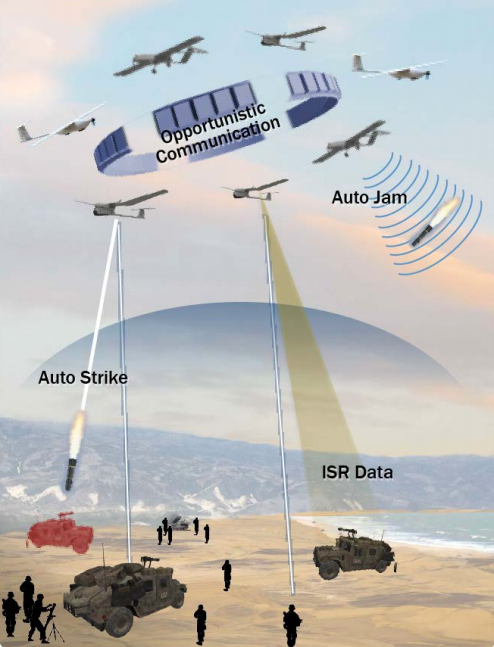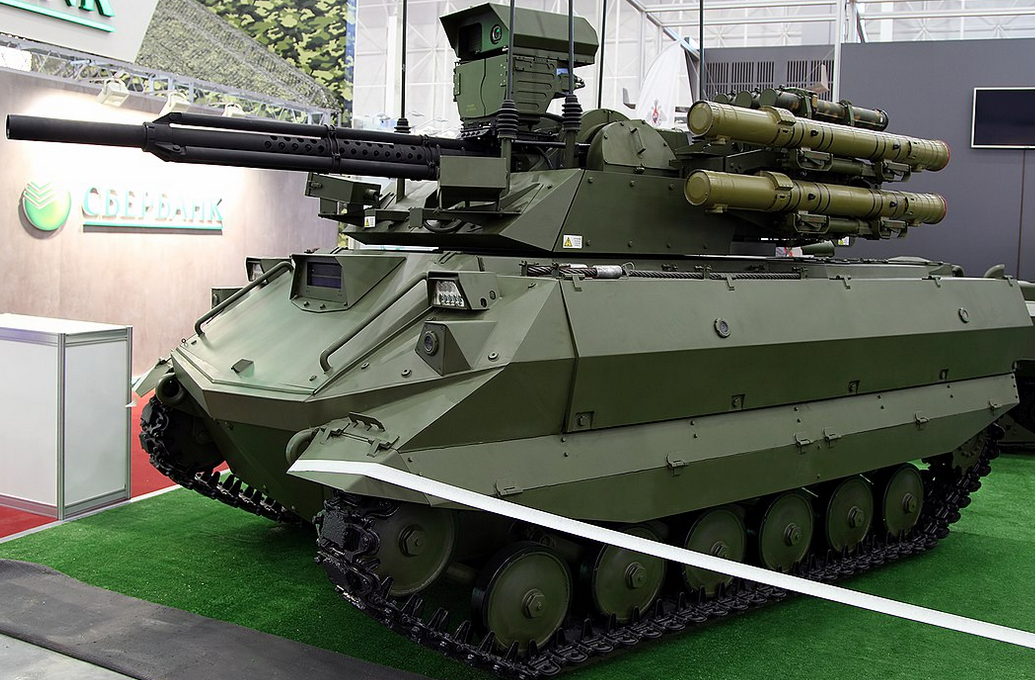KEEP | Leading AI country will be ‘ruler of the world,’ says Putin
September 3, 2017

DoD autonomous drone swarms concept (credit: U.S. Dept. of Defense)
Russian President Vladimir Putin warned Friday (Sept. 1, 2017) that the country that becomes the leader in developing artificial intelligence will be “the ruler of the world,” reports the Associated Press.
AI development “raises colossal opportunities and threats that are difficult to predict now,” Putin said in a lecture to students, warning that “it would be strongly undesirable if someone wins a monopolist position.”
Future wars will be fought by autonomous drones, Putin suggested, and “when one party’s drones are destroyed by drones of another, it will have no other choice but to surrender.”
U.N. urged to address lethal autonomous weapons
AI experts worldwide are also concerned. On August 20, 116 founders of robotics and artificial intelligence companies from 26 countries, including Elon Musk* and Google DeepMind’s Mustafa Suleyman, signed an open letter asking the United Nations to “urgently address the challenge of lethal autonomous weapons (often called ‘killer robots’) and ban their use internationally.”
“Lethal autonomous weapons threaten to become the third revolution in warfare,” the letter states. “Once developed, they will permit armed conflict to be fought at a scale greater than ever, and at timescales faster than humans can comprehend. These can be weapons of terror, weapons that despots and terrorists use against innocent populations, and weapons hacked to behave in undesirable ways. We do not have long to act. Once this Pandora’s box is opened, it will be hard to close.”
Unfortunately, the box may have already been opened. Three examples:
Russia. In 2014, Dmitry Andreyev of the Russian Strategic Missile Forces announced that mobile robots would be standing guard over five ballistic missile installations, New Scientist reported. Armed with a heavy machine gun, this “mobile robotic complex … can detect and destroy targets, without human involvement.”

Uran-9 unmanned combat ground vehicle (credit: Vitaly V. Kuzmin/CC)
In 2016, Russian military equipment manufacturer JSC 766 UPTK announced what appears to be the commercial version: the Uran-9 multipurpose unmanned ground combat vehicle. “In autonomous mode, the vehicle can automatically identify, detect, track and defend [against] enemy targets based on the pre-programmed path set by the operator,” the company said.
United States. In a 2016 report, the U.S. Department of Defense advocated self-organizing “autonomous unmanned” (UA) swarms of small drones that would assist frontline troops in real time by surveillance, jamming/spoofing enemy electronics, and autonomously firing against the enemy.
The authors warned that “autonomy — fueled by advances in artificial intelligence — has attained a ‘tipping point’ in value. Autonomous capabilities are increasingly ubiquitous and are readily available to allies and adversaries alike.” The report advised that the Department of Defense “must take immediate action to accelerate its exploitation of autonomy while also preparing to counter autonomy employed by adversaries.”**
South Korea. Designed initially for the DMZ, Super aEgis II, a robot-sentry machine gun designed by Dodaam Systems, can identify, track, and automatically destroy a human target 3 kilometers away, assuming that capability is turned on.
* “China, Russia, soon all countries w strong computer science. Competition for AI superiority at national level most likely cause of WW3 imo.” — Elon Musk tweet 2:33 AM – 4 Sep 2017
** While it doesn’t use AI, the U.S. Navy’s computer-controlled, radar-guided Phalanx gun system can automatically detect, track, evaluate, and fire at incoming missiles and aircraft that it judges to be a threat.
UPDATE Sept. 5, 2017: Added Musk tweet in footnote